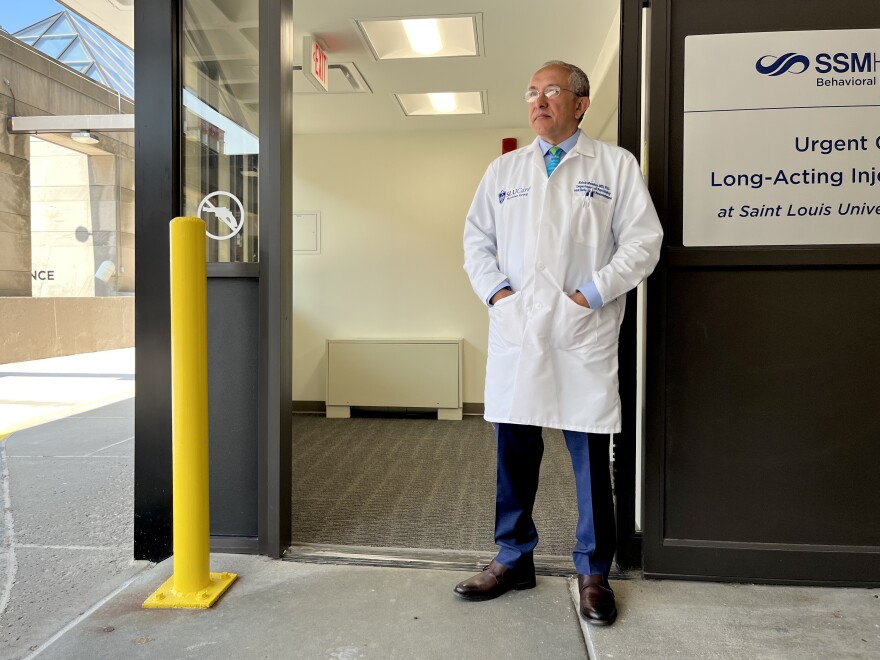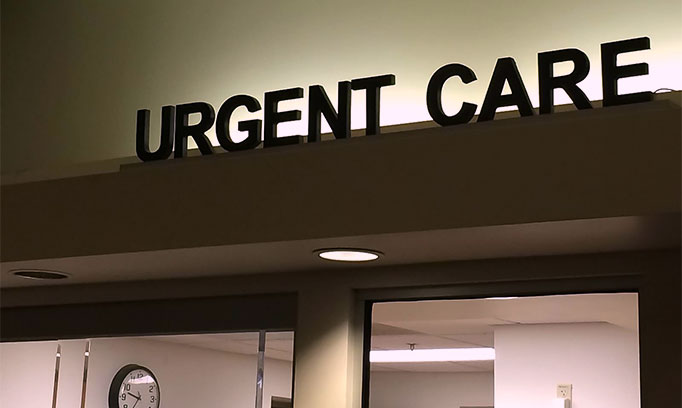What to Expect at a Leading Clinic Offering Urgent Care Services
What to Expect at a Leading Clinic Offering Urgent Care Services
Blog Article
How Urgent Care Clinics Enhance Access to Healthcare for Patients With Immediate yet Non-Emergent Medical Requirements
Immediate care facilities have become a crucial part in the health care landscape, addressing the requirements of clients who need immediate attention for non-emergent conditions. By operating beyond conventional office hours and providing a streamlined technique to small injuries and ailments, these centers not just lower the concern on emergency situation divisions but likewise improve general individual access to prompt care. As we consider the ramifications of this model, it ends up being important to check out just how urgent care centers are changing individual experiences and outcomes in manner ins which merit further expedition.
Duty of Urgent Care Clinics
Urgent treatment facilities play an important duty in the health care system by offering accessible and immediate medical solutions for non-life-threatening problems. These centers function as a crucial bridge in between primary care suppliers and emergency departments, properly easing the worry on health centers while guaranteeing patients obtain timely care. By operating expanded hours, including evenings and weekends, urgent care centers satisfy people who may not have the flexibility to go to a standard doctor's workplace during common company hours.
The spectrum of services used at immediate treatment facilities includes treatment for small injuries, health problems, and diagnostic solutions such as X-rays and lab examinations. This breadth of care enables people to attend to a variety of wellness worries without the long haul times typically connected with emergency spaces. Additionally, immediate care centers usually use a diverse group of health care experts, including doctors, registered nurse practitioners, and physician aides, that are equipped to handle numerous medical situations.
Benefits of Immediate Accessibility

Additionally, immediate access decreases the concern on health care service providers and emergency situation departments by diverting less vital situations to ideal settings. This alleviates overcrowding in emergency clinic, allowing those with real emergencies to obtain the urgent treatment they require without unneeded delays.
Moreover, the ease of extensive hours and walk-in schedule suggests that patients can seek treatment without the demand for consultations, which is specifically useful for individuals with unpredictable schedules or those that might experience abrupt wellness issues. - Urgent Care
The ease of access of urgent treatment centers fosters a proactive strategy to wellness, encouraging clients to look for clinical guidance and therapy sooner instead of later. This not just boosts individual fulfillment but likewise promotes a culture of preventive treatment, eventually leading to much healthier communities.
Contrast With Emergency Situation Rooms
Frequently, patients discover themselves not sure whether to visit an immediate care clinic or an emergency situation space when faced with a clinical problem. Urgent care centers are developed to attend to non-emergent but prompt clinical issues, such as small injuries, infections, or health problems.
In contrast, emergency areas are furnished to manage lethal situations and severe medical emergencies, such as cardiovascular disease, strokes, or significant trauma. These facilities use sophisticated diagnostic tools and expert appointments, which can cause much longer wait times for people with much less vital problems. Typically, emergency clinic tend to be a lot more pricey than immediate treatment centers, making urgent treatment a much sites more economical choice for non-emergent requirements.
Inevitably, while both urgent care facilities and emergency areas play crucial functions in the healthcare system, recognizing their respective functions enables individuals to choose the proper setup based upon the necessity and nature of their clinical problems.
Services Used by Urgent Treatment
Immediate care facilities provide a vast range of solutions customized to attend to non-emergent medical needs, making them a hassle-free choice for people seeking prompt interest. These centers are geared up to take care of numerous problems, including minor fractures, sprains, and lacerations, which call for instant care however do not require emergency clinic treatment.
Additionally, immediate treatment facilities supply diagnostic services such as X-rays and research laboratory tests, allowing for quicker evaluation and treatment of illnesses. Patients commonly present with usual disorders like colds, influenza, and infections, which can be successfully taken care of on-site. Immediate treatment facilities often provide precautionary services, including inoculations and health screenings, adding to total public wellness.
An additional crucial solution used is the management of chronic problems worsened by acute symptoms, such as bronchial asthma or diabetes, guaranteeing patients receive timely treatment without overwhelming emergency situation services. Lots of clinics also extend their hours past conventional office routines, boosting access for people who might need treatment throughout nights or weekends.
Improving Individual End Results

Immediate treatment centers are furnished to deal with a series of non-emergent medical concerns, consisting of small injuries, infections, and health this post problems. Their focus on accessible, top notch care enables individuals to obtain proper treatments and preventative solutions, promoting better wellness administration. These clinics usually utilize a multidisciplinary strategy, integrating numerous health care professionals to make sure extensive treatment.
Client education and learning is also a vital component of boosting outcomes. Immediate treatment suppliers frequently use guidance on follow-up treatment, preventive procedures, and lifestyle adjustments, empowering individuals to take view it now an active role in their wellness. The mix of prompt accessibility, expert care, and client education and learning not just boosts satisfaction but likewise leads to enhanced long-lasting wellness end results, enhancing the worth of immediate care clinics in the healthcare continuum.
Final Thought
In summary, immediate treatment centers serve an essential function in enhancing healthcare accessibility for individuals with immediate, non-emergent clinical demands. Eventually, immediate treatment facilities are crucial in connecting the gap in between primary treatment and emergency solutions, making sure obtainable and effective healthcare for neighborhoods.
On average, emergency situation spaces often tend to be a lot more expensive than immediate care clinics, making immediate care a much more affordable option for non-emergent requirements. (Urgent Care)

Ultimately, immediate treatment facilities are crucial in linking the space in between primary treatment and emergency situation services, making certain available and effective healthcare for neighborhoods.
Report this page